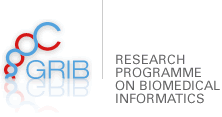
GRIB scientists participate in the analysis of the mouse genome sequence.
The sequence and analysis of more than 95 percent of the mouse genome is published for the first time in current edition of Nature. In addition to revealing 9000 new mouse genes, the research papers reveal 1200 new human genes, a significant number of which are likely to be involved in cancers and other diseases. These findings will allow researchers to home in more rapidly on genes in order to better diagnose and treat many human diseases.
The participation of Roderic Guigó, Josep F. Abril and Genís Parra, from the Research Group on Biomedical Informatics (GRIB), has been key to analyse the mouse genome sequence. The Genome Bioinformatics Laboratory, directed by Roderic Guigó, has been one of the leaders of this analysis, together with other research groups from the United States and England. GRIB researchers have developed bioinformatic tools and procedures to carry out the comparative analysis of the human and mouse genome. These programs have allowed a more accurate identification of their genes and have resulted in the discovery of more than 1.000 human genes, previously unknown.
The mouse sequence is the phrasebook that is transforming our ability to translate the human book of life. The research articles show that for almost every human gene there is a mouse equivalent, allowing us to translate for the first time the words of two genomes into a common language that can be shared by scientists the world over. The reports show that both species have around 30,000 genes, yet only 300 are unique to either organism--highlighting the tremendous value of the mouse as the most important animal model in biomedical research.


